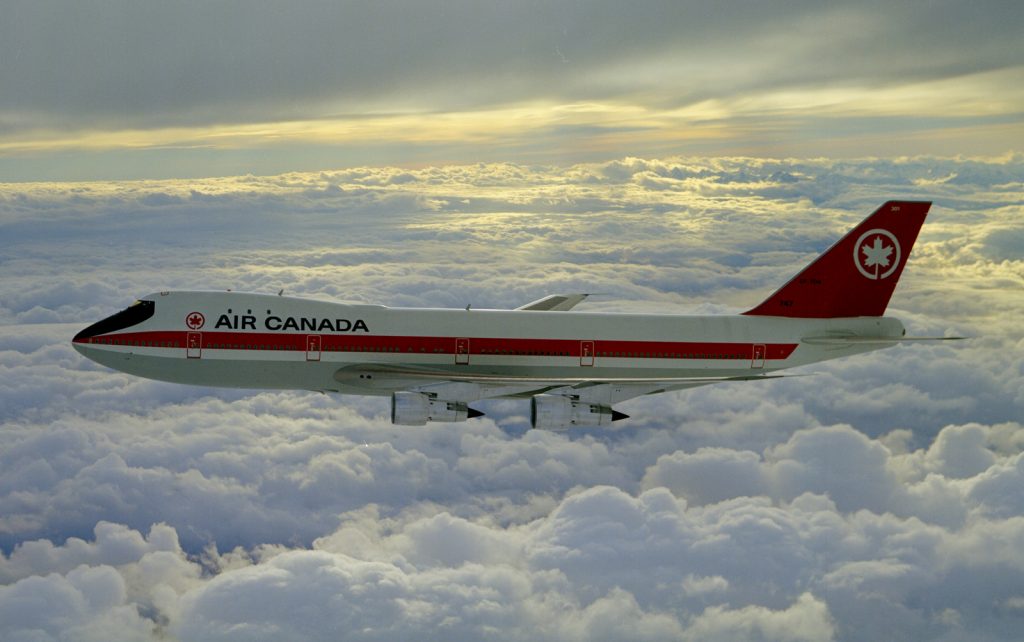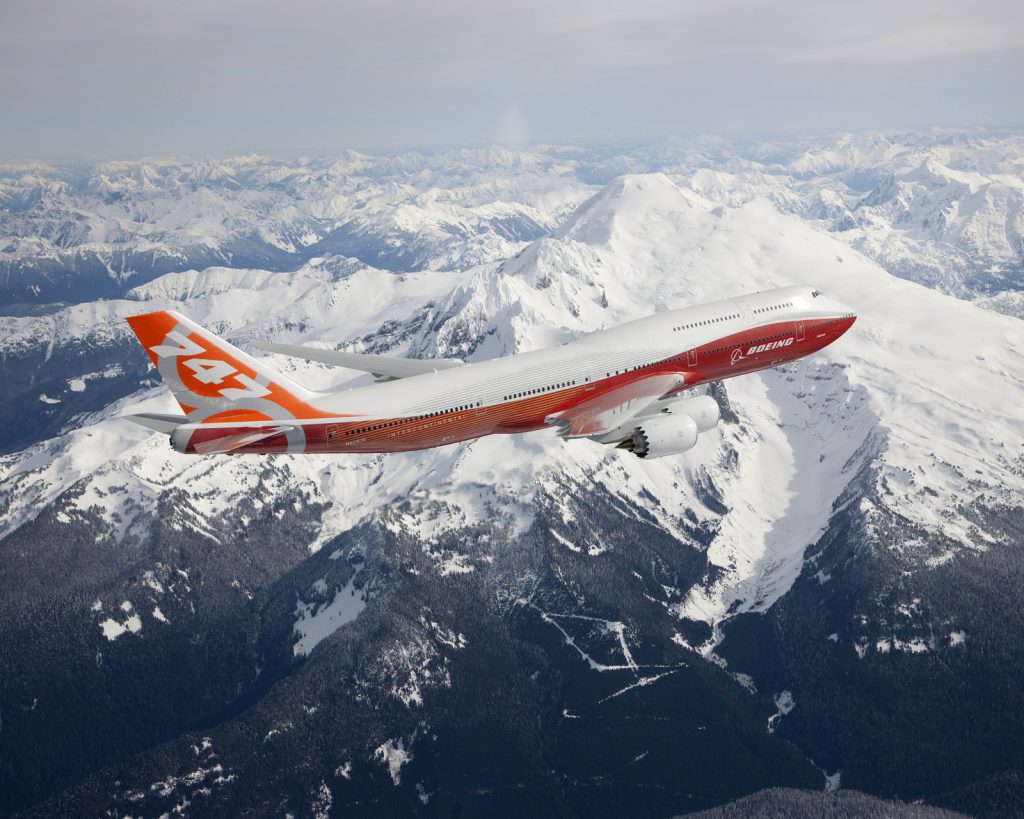Written for Skies Magazine – May/June 2015
It’s been 44 years since the first 747-100 was delivered to Air Canada, in February 1971. That was barely a year after the industry-changing wide-body aircraft entered service with launch airline Pan American Airways, and just two years after the 747’s first flight. In Canada, different versions of the 747 transported passengers on Air Canada, CP Air/Canadian Airlines, Nationair, and Wardair for over 30 years.
The 747 was developed during a remarkable decade for the Boeing Company. The tri-jet 727 and twin-jet 737 were designed and went into service, along with derivatives of the intercontinental 707. In 1967, Boeing was awarded the contract to develop an American supersonic transport (SST), a resource-intensive project that was ultimately cancelled in 1971. In the midst of it all, the 747 was put into development and ultimately approved for production in mid-1966. Soon after, Pan Am became the first customer, with an order for 25 aircraft.
After an amazingly short 28-month gestation, on Sept. 30, 1968, the prototype 747, serial #RA001, rolled out of its brand-new assembly building in Everett, Wash. The new aircraft was revolutionary; nothing like it had been seen before, and it garnered worldwide attention and publicity. Here was a plane that was 70 metres long, had a wingspan of 60 metres, a tail that reached 20 metres into the air, and a cockpit that sat three storeys above the ground. With room for more than 500 passengers, and with a maximum takeoff weight of over 330,000 kilograms, it defied logic to believe that it could fly.
The twin-aisle, wide-body design of the 747’s main deck provided passengers with a spacious cabin, but was also sized for two, side-by-side standard air cargo pallets. At the time, it was thought that the SST would become the premiere commercial aircraft, and that the 747 would be a footnote in aviation history. So, to ensure the plane’s future, Boeing engineers designed the 747 to double as an efficient freighter. That decision led to the placement of the cockpit above the main deck to simplify the operation of an upward-opening nose for cargo operations. That high cockpit, and the “bump” right behind, gave the 747 its iconic profile.
The 747 introduced new technologies to commercial aviation, with the Pratt & Whitney (P&W) JT9D high-bypass turbofan engine arguably being the most important. The JT9D was a leading-edge design, and P&W had challenges getting the engine into service.
Brien Wygle, who was Boeing’s assistant director of flight operations at the time, commented on the engine during a recent interview with Skies. “The early JT9Ds were very prone to surge,” he said. “The airflow into the engines would break down; there would be an enormous bang, and a temporary loss of thrust.” Wygle recalled that 40 engines were tested before settling on the four that would power the prototype 747 on its first flight.
The future of the financially-strapped Boeing Company was on the line as 747 project pilot and pilot-in-command Jack Waddell, co-pilot Brien Wygle and flight engineer Jess Wallick waited for the weather to clear on the morning of Feb. 9, 1969. The clouds lifted just enough by 11:30 a.m., and the crew flew RA001 gracefully off Everett’s main runway, on its first flight.
In those days before full-motion, ultra-realistic simulators, the first flight of a new aircraft was the first flight for the pilots, too. Wygle said, “Of course, on the first flight, we didn’t delve into the difficult corners, but flying the airplane was a delight. It was obvious right away that this was a pilot’s airplane. The size of the plane was significant only on landing, because you had to learn to begin your flare at a higher altitude. The pilot was up there on the third floor, way up in the air!”

Air Canada was the first Canadian airline to introduce 747-100 service across Canada and to Europe in the spring of 1971.
Photo: Air Canada Archives
More than 1,500 of the various models of the 747 have been delivered to customers over the past 45 years. The newest model is the 747-8, in passenger service with Lufthansa since June 2012. The 747-8 is longer than previous 747s, has a new wing, and shares many design features with the 787, including the Dreamliner’s advanced GEnx engine technology. But sales of both the passenger and freighter version of the 747-8 have been slow, with only about 120 total orders, to date. This has led Boeing to reduce the plane’s production rate to 1.3 aircraft per month, or about 15 new planes per year.
Operational costs are leading airlines, which have flown the 747 for decades, to retire their 747-400 passenger aircraft. Efficient large, twin-engine, long-range planes, such as Boeing’s own 777-300ER, and the upcoming 777-9X and Airbus A350-1000, are now an integral part of most international airlines’ fleet plans, replacing the 747.
But that’s not to say that the “Queen of the Skies” will disappear from the world’s airways anytime soon. Hundreds are still flying, and will be, for many years to come. And, it seems that those 1960s Boeing designers were right in predicting the 747’s importance as a cargo carrier. Earlier models of the plane are still in wide use by the world’s cargo airlines, with deliveries of the new 747-8F outpacing the passenger version by three to one. Another nine planes have been delivered as Boeing Business Jets, and those ultimate, corporate and government VVIP aircraft will be joined by a new, 747-8-based Air Force One for the U.S. President.
Far from being just a footnote, the 747’s importance in the history of air transport is assured. Perhaps Clive Irving, author of Wide-Body – The Triumph of the 747 put it best, at a recent 747 forum at Seattle’s Museum of Flight. Irving said, “It’s the world’s greatest travelling machine. It had a social and political effect way beyond any other aircraft. The 747 was the pathfinder for mass international air travel.”
